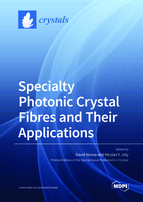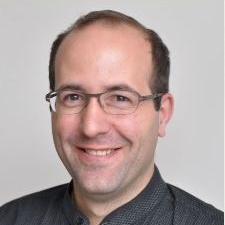Specialty Photonic Crystal Fibres and Their Applications
A special issue of Crystals (ISSN 2073-4352). This special issue belongs to the section "Inorganic Crystalline Materials".
Deadline for manuscript submissions: closed (28 February 2021) | Viewed by 18061
Special Issue Editors
Interests: photonic crystal fibres; ultrafast phenomena; nonlinear optics; novel light sources
Special Issue Information
Dear Colleagues,
Since their first demonstration in 1996, photonic crystal fibres (PCFs) have evolved into an established platform for applications in both academic and industrial environments, owing to their ability to confine light in a far more versatile way than possible with conventional optical fibres. In particular, the multifaceted world of PCF has expanded to cover a broad range of fields such as interferometry, telecommunications, high-power beam delivery, laser science, frequency conversion, quantum optics, sensing, ultra-precise frequency metrology, and many others.
In recent years, there has been a great interest in the design, fabrication, and application of specialty PCFs with unique properties far beyond the capabilities of standard fibres. For instance, the original dream of surpassing the performance of conventional fibres for telecommunications is now in sight for the first time due to the recent demonstration of broadband-guiding hollow-core PCFs capable of transporting high light intensities and photon energies with extraordinarily low attenuation close to that of commercial standard fibres. Other examples of these special developments include PCFs made of glasses other than fused silica to extend the range of applications either into the mid-infrared or the ultraviolet. PCFs can also be engineered to exhibit strong circular birefringence by twisting them around their longitudinal axis. Specialty PCFs have also paramount implications in real-world applications such as the development of the new generation of high-power fibre lasers and amplifiers involving active PCFs or enhanced sensing aided by polymer-based PCFs.
This Special Issue will give an overview of the state-of-the-art in PCF technology and its multiple applications, combined with an optimistic outlook to what lies ahead. Contributions will include original research papers on aspects related to specialty PCFs, as well as reviews of specific key topics of current relevance.
Dr. David Novoa
Prof. Dr. Nicolas Y. Joly
Guest Editors
Manuscript Submission Information
Manuscripts should be submitted online at www.mdpi.com by registering and logging in to this website. Once you are registered, click here to go to the submission form. Manuscripts can be submitted until the deadline. All submissions that pass pre-check are peer-reviewed. Accepted papers will be published continuously in the journal (as soon as accepted) and will be listed together on the special issue website. Research articles, review articles as well as short communications are invited. For planned papers, a title and short abstract (about 100 words) can be sent to the Editorial Office for announcement on this website.
Submitted manuscripts should not have been published previously, nor be under consideration for publication elsewhere (except conference proceedings papers). All manuscripts are thoroughly refereed through a single-blind peer-review process. A guide for authors and other relevant information for submission of manuscripts is available on the Instructions for Authors page. Crystals is an international peer-reviewed open access monthly journal published by MDPI.
Please visit the Instructions for Authors page before submitting a manuscript. The Article Processing Charge (APC) for publication in this open access journal is 2600 CHF (Swiss Francs). Submitted papers should be well formatted and use good English. Authors may use MDPI's English editing service prior to publication or during author revisions.
Keywords
- Photonic crystal fibres
- Nonlinear optics
- Supercontinuum generation
- Laser science
- Beam delivery
- Telecoms
- Quantum optics







